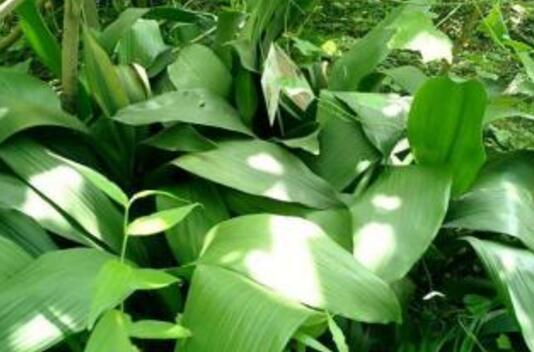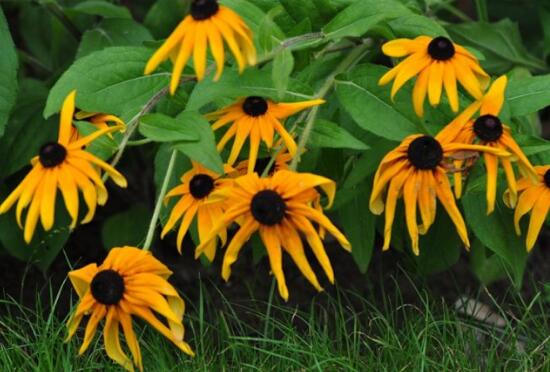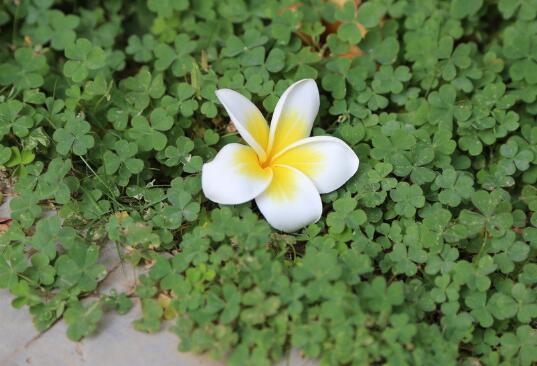Why does the orchid not grow new leaves? how to make the orchid burst / the temperature is moderate is the key.
One-leaf orchid is a famous indoor foliage plant, in the process of growth, it keeps beautiful by constantly sprouting new leaves, but some flower lovers find that the new leaves of one-leaf orchid are hardly long, so why not grow new leaves? The editor came to analyze the main reasons for you.
Why doesn't the orchid grow new leaves?
1. Air drying

When the air is dry, the humidity of the environment is relatively low, and the plant likes the humid environment, so when the humidity is low, it sprouts and grows new leaves more slowly.
2. Improper pruning
When introducing the yellowing of the leaves of an orchid, we mentioned that in order to maintain the light transmittance, the dense branches and leaves should be pruned in time, but if most of the leaves were cut off during pruning, it would be unable to carry out normal photosynthesis, and then the new leaves would not grow.
3. The temperature is too low
One-leaf orchid has strong cold resistance, and many flower friends like to plant it in the courtyard, so some flower friends will find that it does not grow new leaves in winter, why not grow new leaves at this time? The answer is that the temperature is too low, when the temperature is lower than 3 degrees, the orchid will be dormant, its growth is basically stagnant, the new leaves can not grow naturally.
4. The soil alkalinity is too high.
Magnolia does not have high requirements for soil, slightly acidic or slightly alkaline soil can be planted, but if the alkalinity is too high, it will sprout and grow new leaves very slowly, and even affect the growth of old leaves, so when the alkalinity of the soil we use is too high, we should change the soil in time, and this situation can be improved by watering alum and fertilizing water.
How to make a leaf orchid burst into a pot
1. The temperature is suitable
Keeping the temperature at 10-25 degrees can make the orchid grow the fastest, so in the north, it should be kept warm in winter to keep it above 3 degrees in winter, while in the south it needs to be moved back indoors in winter.
2. Turn the soil and change the basin
A leaf orchid is easier to feed, but how to make a leaf orchid burst? The answer is that the basin should be changed once every 1-2 years, and the time is generally chosen in spring. Turning the soil can ensure good drainage of the soil, and changing the basin can improve the growth space.
3. Scientific reproduction
When the orchid grows to a certain stage, scientific reproduction is needed to ensure that there are 2-3 plants in each basin, which can reduce the competition for nutrients among plants, make the nutrition more balanced, and promote the germination of new buds at the same time.
One leaf orchid blossoms picture, why one leaf orchid does not grow new leaf
One leaf orchid, alias as big leaf evergreen, bamboo leaf plate, etc., because it is shaped like a spider egg, so there is another very interesting name: Spider holding egg.
One-leaf orchid, which has fewer leaves, can have up to 5 leaves, and most of them bloom for one leaf, one stem and one flower, so it is widely known as "one-leaf orchid".
The speed at which a leaf orchid grows new leaves is extremely slow, but it is not that it does not grow leaves. Unlike other plants, it does not focus on changing leaves at one time to grow new buds, but at a speed that we are not aware of. So some people think that a leaf orchid does not grow new leaves. This is a misunderstanding.
Its leaf shape is straight and straight, the leaf color is green, the thick green is shiny, and the posture is elegant and beautiful. It is an excellent plant for indoor greening and decoration.
It can be applied to the greening of family rooms, and can also be used for office work and the layout of public leisure areas. Not only can be watched alone, but also can be used as a match, with other flowering plants to match, as "green leaves", set off the beauty of other flowers.
One-leaf orchid has a variety of varieties, and the flowers vary according to different varieties, the common ones are yellow and white, and the flowers are smaller; the purple flowers are the most common, slim and light, and appear both noble and elegant because of the leaves.
One-leaf orchid, a plant with both beautiful and medicinal value, decorates the indoor environment, or is used to treat all kinds of physical discomfort, it is beautiful and practical, so it also makes people more loving.
The reason why one-leaf orchid does not grow new leaves 1. Temperature
This is a plant that first grew in the southernmost part of our country, which determines that it can tolerate higher temperatures. In fact, he likes warm conditions and is most suitable for growing in the range of 10 to 25 degrees. A high temperature of 30 degrees can also grow, but no matter how high the temperature is. The minimum should not exceed 3 degrees. If your plant doesn't have leaves, you have to think about whether you put it in a place where the temperature is not right.
Second, lighting
It is a plant that can grow in a lack of light without becoming depressed, which allows him to be raised well indoors, and it is usually enough for us to give him a light once in a while. But if you put him in a dark place for too long, it won't work. After all, plants can't grow without the sun. Long-term lack of light, the germination and growth of new buds will be affected, and new leaves will not grow out.
3. Soil
It is not much different from ordinary flowers and plants and likes loose, breathable soil. Maybe the soil in your pot is too hard, or the cover is too thick, so the plants don't breathe well, and the plants grow slowly. The soil can be loosened, and the soil must not be added too thick.
Fourth, flowerpot
Maybe the flowerpot you planted is small at the very beginning. If the flowerpot is small, there is little space for him to grow. If the plant feels hindered, it will naturally grow slowly or even not long.
5. Pruning
If your plant no longer has leaves, see if the other leaves turn yellow, and some of the branches have withered. At this time, we have to cut off these dead branches and the yellow leaves. This is conducive to the growth of new buds and new leaves.
Compared with the above points, take a look at the reason why the orchid in your home can grow new leaves in time.
- Prev

How to do gerbera leaves yellowing, proper watering control fertilization/soil can not be too little
Gerbera, an ornamental plant, its beautiful flowers, bright colors are loved endless. In life, there are many people who raise gerbera, but novices often encounter yellowing of leaves when raising it, which not only affects viewing, but also dies seriously. What about yellowing of gerbera leaves?
- Next

How to fertilize egg flower, matters needing attention in egg flower fertilization / dilution before application
Among the efficacy and function of egg blossom, its ornamental value is the most familiar role, but if you want it to be ornamental, you should not be careless in the process of breeding, among which fertilization is a more important link. So how to fertilize egg flower? What are the points for attention in fertilization of egg blossom?
Related
- Fuxing push coffee new agricultural production and marketing class: lack of small-scale processing plants
- Jujube rice field leisure farm deep ploughing Yilan for five years to create a space for organic food and play
- Nongyu Farm-A trial of organic papaya for brave women with advanced technology
- Four points for attention in the prevention and control of diseases and insect pests of edible fungi
- How to add nutrient solution to Edible Fungi
- Is there any good way to control edible fungus mites?
- Open Inoculation Technology of Edible Fungi
- Is there any clever way to use fertilizer for edible fungus in winter?
- What agents are used to kill the pathogens of edible fungi in the mushroom shed?
- Rapid drying of Edible Fungi

